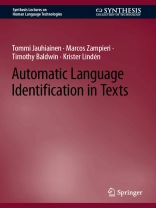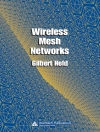This book provides readers with a brief account of the history of Language Identification (LI) research and a survey of the features and methods most used in LI literature. LI is the problem of determining the language in which a document is written and is a crucial part of many text processing pipelines. The authors use a unified notation to clarify the relationships between common LI methods. The book introduces LI performance evaluation methods and takes a detailed look at LI-related shared tasks. The authors identify open issues and discuss the applications of LI and related tasks and proposes future directions for research in LI.
Tabla de materias
1 Introduction to Language Identification.- 2 Features and Methods.- 3 Evaluation and measurement.- 4 Specific Challenges of Variation and Text Types.- 5 Large scale, Multi-domain Language Identification.- 6 Applications and Related Tasks.- 7 Conclusion and Future Directions.
Sobre el autor
Tommi Jauhiainen, Ph.D., is a Post-doctoral Researcher at The University of Helsinki. He wrote his master’s thesis on automatic language identification and continued his research on the same subject as a doctoral student. Dr. Jauhiainen organized the first shared task in Cuneiform Language Identification (CLI) in 2019 as well as the Uralic Language Identification (ULI) shared tasks in 2020 and 2021. He is the first author of approximately 20 peer-reviewed publications on language identification.
Marcos Zampieri, Ph.D., is an Assistant Professor at George Mason University. He received his Ph D from Saarland University with a thesis on computational modelling of language variation. He has published over 100 peer-reviewed papers on various topics in computational linguistics and NLP such as language and dialect identification, native language identification, machine translation, lexical complexity prediction, and social media mining.
Timothy Baldwin, Ph.D., is the Acting Provost and Chair of the Department of Natural Language Processing at Mohamed bin Zayed University of Artificial Intelligence (MBZUAI) in addition to being a Melbourne Laureate Professor in the School of Computing and Information Systems at The University of Melbourne. Prior to joining The University of Melbourne, he was a Senior Research Engineer at the Center for the Study of Language and Information at Stanford University. He is the author of over 450 peer-reviewed publications across diverse topics in natural language processing and AI, in addition to being an ARC Future Fellow, and the recipient of a number of prestigious awards at top conferences.
Krister Lindén, Ph.D., is the Research Director of Language Technology at the University of Helsinki in addition to the National Coordinator of FIN-CLARIN, the Finnish Node of CLARIN ERIC, which is a European research infrastructure for Social Sciences and the Humanities. Heis the Chair of the CLARIN National Coordinators Forum and a member of CLIC (Committee for Legal and Ethical Issues in CLARIN). He holds a doctoral degree in Language Technology from the University of Helsinki. He is the co-author of more than 160 publications related to language technology and its utilization in digital humanities and language resource processing. He is currently also a deputy team leader in the Centre of Excellence of Ancient Near Eastern Empires.












